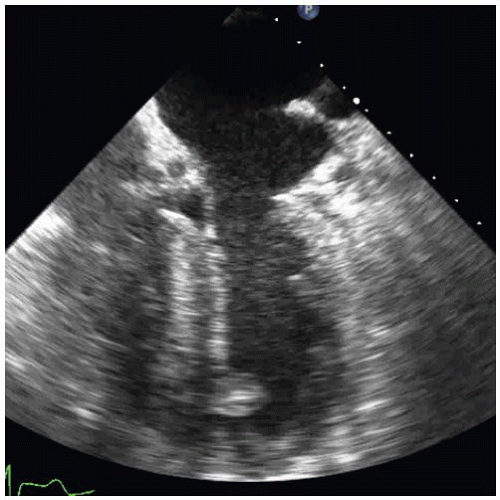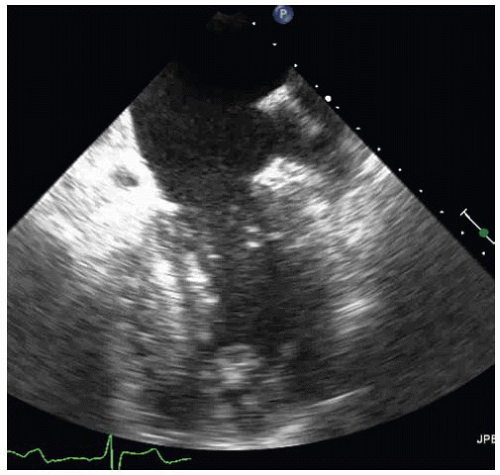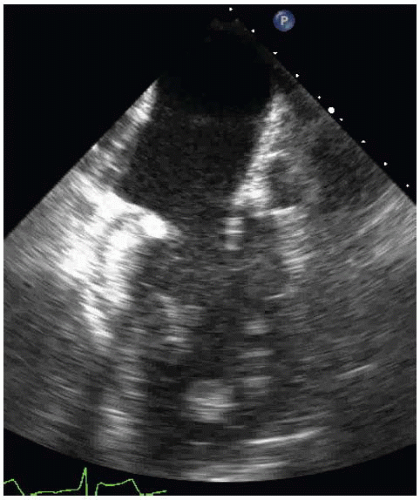Aortic Stenosis and Atrial Fibrillation
A 74-year-old woman with severe aortic stenosis and atrial fibrillation (AFIB) is referred for aortic valve replacement. See Figures 71-1, 71-2 and 71-3 and Videos 71-1 to 71-3.
QUESTION 1. In addition to aortic stenosis, the patient also has:
A. Left atrial appendage thrombus
B. Apical thrombus
C. Endocarditis
D. Left ventricular (LV) myxoma
E. LV papillary fibroelastoma (PFE)
View Answer




ANSWER 1: E. This is a very unusual case of LV PFE. Primary cardiac tumors are very rare, and the most common is myxoma, which would make this the most likely diagnosis of this incidental finding in our patient. PFE is the third most common primary tumor of the heart but is most frequently seen on the aortic or mitral valve. PFE may embolize and cause distant embolization or myocardial infarctions due to embolization to the coronary arteries. Although the patient has AFIB, there is no evidence of a thrombus in the left atrial appendage. LV thrombus is very unlikely, given the normal LV size and function without evidence of segmental wall motion abnormalities. Although metastatic disease is more common than primary cancers of the heart, the patient is in overall good health without evidence of cancer in other places. The LV mass is seen in multiple views and does not represent an artifact (Figs. 71-4, 71-5, 71-6, 71-7 and 71-8 and Videos 71-4 and 71-5).
Stay updated, free articles. Join our Telegram channel

Full access? Get Clinical Tree





